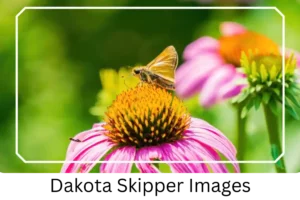Dakota Skipper (Hesperia dacotae)
The Dakota Skipper (Hesperia dacotae) is a captivating butterfly species found in the hilly greens of North America. This remarkable species is classified as ‘Vulnerable’ (VU) by the International Union for Conservation of Nature (IUCN) 2.3, making it a species of concern in need of conservation efforts. In this comprehensive guide, we’ll delve into the world of the Dakota Skipper, exploring its lifecycle, habitat, appearance, and more.
Scientific Classification
- Family: Hesperiidae
- Genus: Hesperia
- Scientific Name: Hesperia dacotae
Overview
Dakota Skippers are small to medium-sized butterflies with a relatively short active period, typically lasting around three weeks between June and July. Despite their brief appearance, they have a unique life cycle and fascinating characteristics that make them a subject of interest among butterfly enthusiasts and conservationists alike.
Description and Identification
Caterpillar
The Dakota Skipper caterpillar is characterized by its light brownish-gray coloration with a distinctive black head bordered in white. Their bodies are smooth, and they primarily feed on grass leaves during the night. These resourceful creatures also construct shelters made of silken tubes lined with grass, providing them with protection and comfort.
Pupa
Adult Dakota Skippers emerge from the chrysalis state between mid-June and early July, a process influenced by weather conditions. This transformation marks a crucial stage in their lifecycle as they transition into their beautiful adult form.
Adult Butterfly
Sexual Dimorphism: Present
When the wings of the Dakota Skipper are open, you’ll be treated to a stunning display of a golden-orange hue adorned with hazy dark marks. Interestingly, there are distinctive differences between male and female Dakota Skippers. In the male, the forewing bears a black felt inside the stigma, while the female displays a transparent white mark under the cell. When their wings are closed, the underside of the secondary wings showcases a yellowish-orange hue in males and a brownish-gray hue in females. Both sexes may or may not have a faint band of spots.

 Average wingspan: 1 – 1 3/8 inches (2.5 – 3.5 cm)
Average wingspan: 1 – 1 3/8 inches (2.5 – 3.5 cm)
Flight pattern: Fast and erratic, often flying close to the ground, which is characteristic of their behavior.
Eggs
Dakota Skipper butterflies lay their eggs singly on the underside of leaves of specific host plants, an essential part of their reproductive cycle.
Quick Facts | |
| Distribution | Dakota Skippers can be found in regions ranging from the southern parts of Manitoba and western North Dakota to the western regions of Minnesota, extending southward to northwest Iowa. |
| Habitat | These butterflies are typically found in the rolling hills of native tall-grass prairie regions, where they rely on specific host plants for sustenance and reproduction. |
| Lifespan of adults | Dakota Skippers have a relatively short adult lifespan, with individuals living for up to 3 weeks on average, although some may survive for as little as 3 to 10 days. |
| Host plants | The Dakota Skipper relies on specific host plants for its survival, including Little bluestem (Andropogon scoparius), bluegrass (Poa pratensis), and panic grass (Panicum). |
| Adult diet | Like many butterflies, they primarily feed on flower nectar. |
How to Identify Dakota Skipper?
Identifying the Dakota Skipper butterfly is relatively straightforward. Look for a small, orange-brown butterfly with a wingspan of about 1 to 1.5 inches (2.5 to 3.8 cm). The upper side of its wings displays a bright orange color with black margins and a few small black spots. Underneath, the wings are mostly pale with a row of small black spots along the hindwing. Additionally, Dakota Skippers have a distinctive dark streak on their forewing that helps in their identification. These butterflies can be found in grasslands and meadows, particularly in North America, and are a delight to spot during the summer months.
Did You Know?
- One intriguing fact about the Dakota Skipper is that its antennae feature a unique hook, a rarity within the butterfly kingdom.
Conclusion
The Dakota Skipper is a captivating and vulnerable butterfly species native to North America, representing a vital component of our ecosystem. Understanding their lifecycle, habitat, and distinct characteristics is essential for their conservation. We hope this comprehensive guide has provided you with valuable insights into the intriguing world of the Dakota Skipper butterfly. As these beautiful creatures continue to face conservation challenges, it’s crucial to appreciate and protect their unique place in our natural world.









